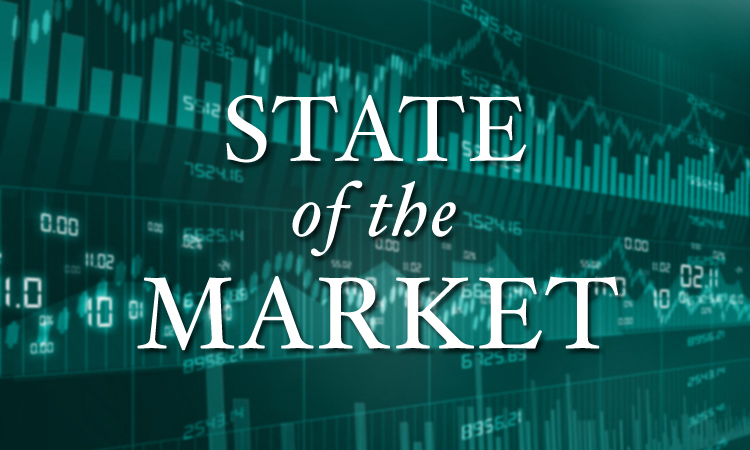Global investment markets contracted during the third quarter, largely due to negative sentiment on China’s slower growth and concerns about softening global demand. For comparative purposes, here’s a snapshot of year-to-date returns on a number of common global investment categories:
Comparative Data of Investment Market Returns
| DJIA | -6.95% |
| S&P 500 (US large stocks) | -5.29% |
| Russell 2000 (US Small Cap Stocks) | -7.73% |
| MSCI All Country World Index (23 developed markets around the globe) |
-8.50% |
| MSCI Emerging Markets (small global) | -17.18% |
| Bonds – Barclays Aggregate Index | 1.13% |
| Commodities – M* Commodity Index | -15.51% |
| Real Estate – S&P Global REIT Index | -4.96% |
(Source: Morningstar, Standard & Poor’s)
Generally, equity markets were somewhat overdue for a normal contraction. As we’ve stated in prior commentaries, equity markets commonly experience fluctuations each year, and the US hasn’t really experienced a downward one of any significance in the past three years. Historically, market declines and advances are usually preceded by some new news. In this case, it was more attributable to a rehashing of old news. Nonetheless, the volatility (both up and down) continued through August and September.
China Front & Center
China was front and center, as the news outlets hemmed and hawed about slowing growth. (They failed to note that China’s economy is still clipping along at a healthy 7% annual growth rate.) The Chinese government is quickly discovering that you cannot let your markets operate freely and expect to exert government control over them as well. Their progression from an infrastructure building economy to a consumer driven one will take years (if not decades) to play out. It will also present challenges and opportunities for large trading partners such as Australia, Europe, and, to a lesser extent, the US.
The Fed’s Inaction
All the hand wringing over the Fed raising rates came to naught, as usual. We remain puzzled by all the hullabaloo over this issue, as the Fed has made it clear that any rate increases will be implemented slowly over a period of time. As such, it should really be a non-event to markets when it does occur. It does, however, give the media something upon which to blame market friction when no other explanations are evident. Here’s what we know: Sooner or later, the Fed will begin to raise rates. When they do, we would expect any market reactions to it to be short lived. The Fed had made it clear that rate increases will be slow and incremental.
Equity Markets, Here & Abroad
In Europe, we’ve seen a drop in equity markets similar to that of the US – primarily due to concerns about softening demand. Once again, opportunities are being created for managers as stocks have become cheaper. European stocks now trade at valuations that are considered more reasonable than the US. In the emerging markets like India, Brazil, Malaysia, etc., double digit declines reflect concerns about both rising interest rates and the uncertainty of orders from larger customers like China and the US who import their goods. We would be quick to note that emerging market stocks – while more volatile – also tend to rise faster when market cycles turn upward, and have outperformed larger more developed markets over the past decade. The ride is just a bit bumpier.
The US equity market declines reflect all of the above concerns as well. Despite the market’s volatility as of late, there’s still far too much money on the sidelines with nowhere to go to earn a potential return. We would expect as the volatility settles down, investors will see much of this money go to work in the domestic stock and bond markets.
Commodities
Commodities continue to be stuck in the doldrums due to flagging demand for raw materials (China again) and a glut of oil. (By the way, where are all those experts who warned us about “peak oil” and a return to the Stone Age as we ran out of it? I suspect they are all flogging gold or some other doomsday strategy, since oil is clearly here to stay.) It is important to remember that commodities run on a very simple supply/demand formula. We’ve had three plus years of waning commodity prices as demand has slowed and supply has not. Sooner or later, demand will return and outstrip supply. And commodity prices will rise again. That’s not a prediction, it’s basic history.
Markets vs. Economies
Despite the recent market downturn, it’s critical to separate the fundamentals underpinning our economy from short term stock market activity. As we’ve said time and again, markets are not economies. The two do not travel in lockstep. The US economy is still expanding at a projected 2.5%-3% annual rate. Not robust, but fair. Real estate, which has led every recovery in history except this one, is finally starting to kick in. And wage growth – a critical component of economic growth – has finally started some positive movement. More broadly, the World Bank projects the global economy will expand in the 2%-3% range over the 2015 – 2016 time period. Until these fundamentals change, properly diversified investors need to remain patient.
This Too Shall Pass
A final word on how to behave during market contractions: While it’s normal and natural to feel concern, it’s equally important to remember that declines ultimately have been followed by advances – every time. Take a look at this chart reflecting inter-year declines of the S&P 500 and where it actually finished each calendar year.

Now, imagine if you got spooked when the markets declined during a year and bailed out. You’d get all of the orange, and none of the blue.
In closing, this too shall pass. Markets will bottom out and rise again – just as they always have. Declines are followed by advances, and patient investors understand this. If you’d like to talk about your current allocations to make sure they match up with your long term objectives, don’t hesitate to give us a call. That’s what we’re here for. See you next month.

